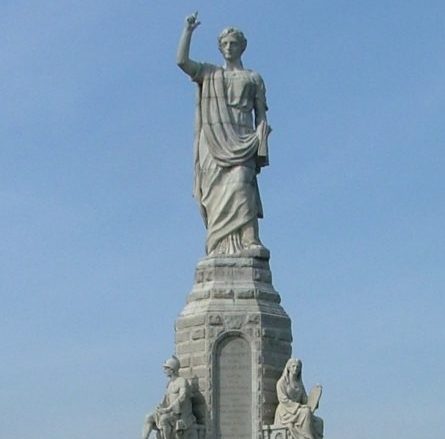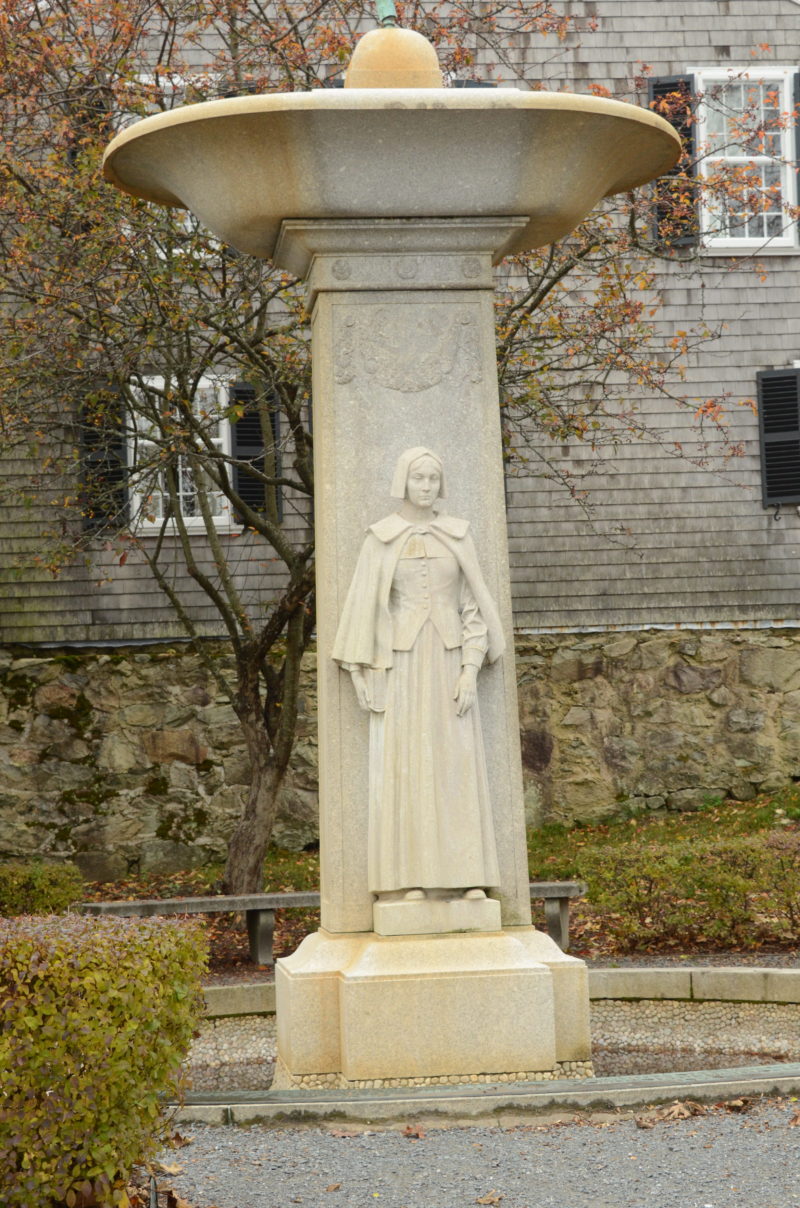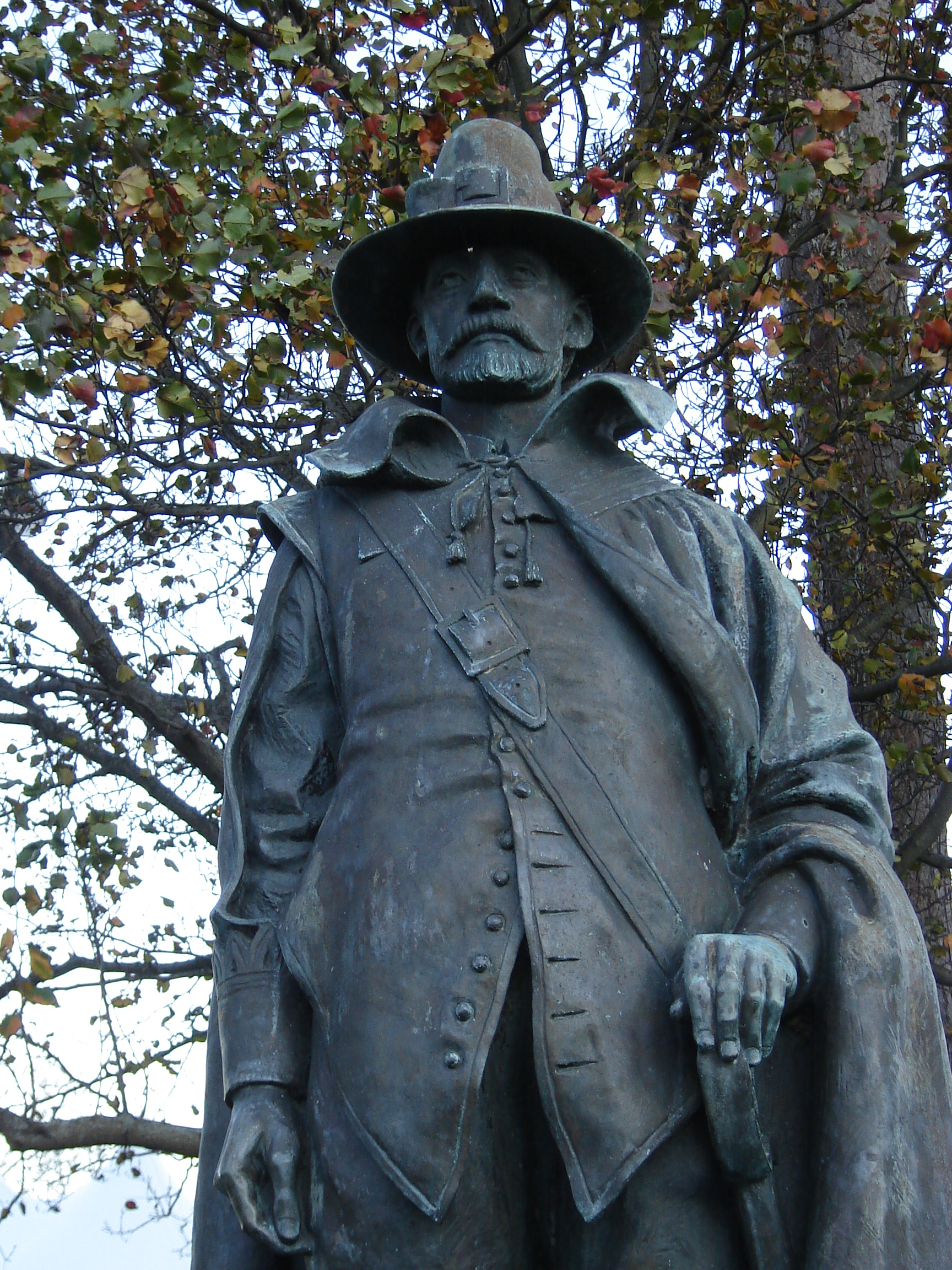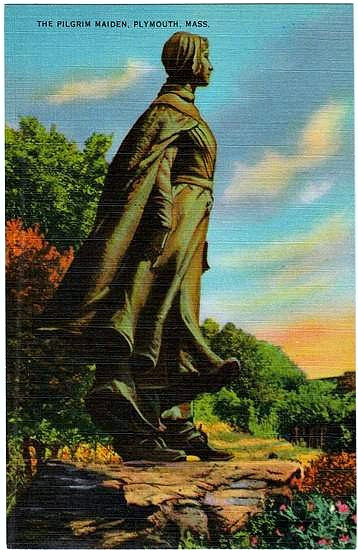The four hundredth anniversary of the Pilgrims arrival in Plymouth, Massachusetts is significant for it portrays the legacy of that tiny church plant that came from Leyden, Holland whose ideas, drawn from the Bible, became some of the unique aspects of the United States such as self-government, a self-regulating economy, the rule of law and the seeds of religious and civil liberty. Though it took time to develop, remembering the legacy of the Pilgrims can bring hope for the future.
The National Monument to the Forefathers

The National Monument to the Forefathers is a masterpiece of symbolism that captures the faith that motivated the pilgrims to come to America as well as the unique ways in which they applied the Bible to morality, law, education and liberty. Erected from 1859 to 1889 and standing 81 feet tall, it is impressive both physically and in its meaning. Every resident and visitor to Plymouth ought to remember their Pilgrim heritage by standing on its grounds. As historian Samuel Eliot Morison declared “in some sense, the pilgrims are the spiritual ancestors of all Americans.”
Pilgrim Mother Monument

Pilgrim Mother Monument depicts a sober minded individual who cares for the well being and training of her children as she arrives in the new world. Her face depicts the difficulties facing women and children in traveling to the wilderness in 1620. As she clutches her Bible, she is aware of the responsibility necessary to implant truth that will keep her family and children facing a bright future in spite of their present sufferings. The monument is a fountain, depicting the family as the source of stability for both church and state. The inscription on the back base reads “they brought up their families in sturdy virtue and a living faith in God, without which nations perish.”
William Brewster Stone Monument
William Brewster Stone Monument describes the legacy of this man’s life and ministry among the Pilgrim church and commonwealth. The oldest individual to come on the Mayflower, Brewster was the spiritual leader of the church in place of their Pastor John Robinson who did not come to Plymouth but stayed with the greater part of the church in Leyden, Holland. Though his preaching was informative and inspiring, his counsel wise, and his life long, it was his character and the fact that he lived out his faith was such consistency that marked his legacy. As the stone signifies in quoting Bradford’s eulogy “undervaluing himself and his own abilities and sometime overvaluing others… inoffensive and innocent in his life and conversation, which gained him the love of those without as well as those within.”
William Bradford Monument

The William Bradford Monument depicts the Governor of the colony and his vision for the overall mission of the pilgrim church planted in America. Bradford became an orphan by 5, was raised by his Uncle and Aunt, but threatened with being disinherited when joining the Separatist Church at age 14 after his conversion at age 12. His character, leadership, government by the rule of law, study of the Scriptures and writing of the history of the colony secured his legacy to future generations.
The Pilgrim Maiden Statue

The Pilgrim Maiden statue in Brewster Gardens depicts the unique fact that several single women came on the Mayflower. This was unheard of at the time. Each single woman or girl was assigned to a family. The statue depicts a woman braving the wind and wilderness with a Bible in her hand as she faces an uncertain future in an unknown land. The inscription at her feet describes these women well when it says “to those intrepid English women whose courage, fortitude and devotion brought a new nation into being.”
